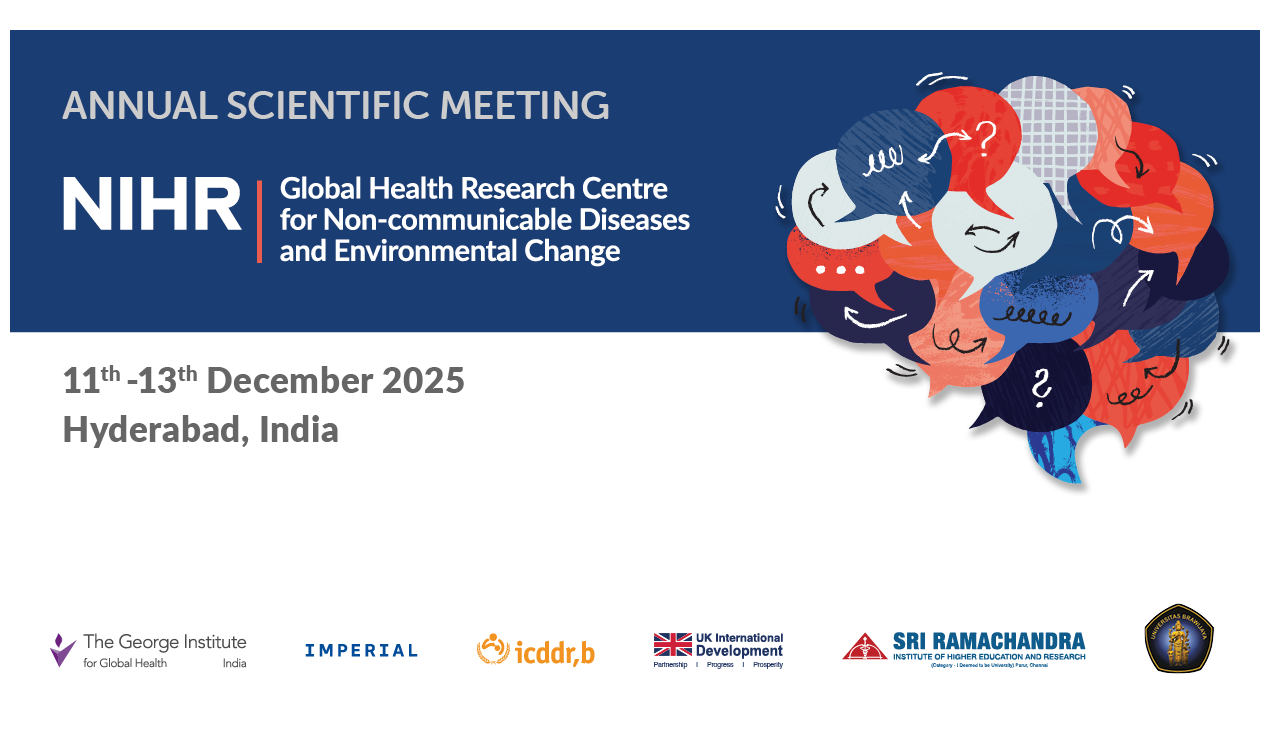Air pollution has emerged as an invisible killer that directly affects both human health and the environment. While its effects on the ecosystem are widely recognized, how polluted air may lead to Non-Communicable Diseases (NCDs) is a growing concern that demands immediate attention. NCDs such as heart disease, stroke, cancer, chronic respiratory diseases, and diabetes are the leading causes of death and responsible for 72% deaths worldwide1. This post explores the intricate relationship between air pollution and NCDs, shedding light on how the air we breathe can influence our long-term health.
Understanding NCDs
Non-communicable Diseases (NCDs), such as hypertension, diabetes, and cancer, are not transmitted directly from one person to another. They develop slowly over a course of time because of one’s lifestyle, environment, and genetics. Management of such diseases often involves long-termcare. Today, there is ample evidence2 to suggest that breathing polluted air can increase the severity of the disease or heighten the risk of developing NCDs.
Air Pollution: A Growing Concern
Air pollutants come in different shapes and sizes. Polluted air consists of a mixture of solid particles and gases released from vehicles and, industries. Dust, pollen, and other forms of chemicals also pollute the air. Among these, particulate matter (PM), nitrogen dioxide (NO2), and sulphur dioxide (SO2) are particularly harmful. They can enter the bloodstream via lungs3 and affect an array of bodily systems. These pollutants have been associated with a range of health issues including cardiovascular diseases, respiratory tract diseases4, and cancer5.
The Link Between Air Pollution and NCDs
However, the relationship between air pollution and NCDs is complex and multifaceted. Studies have consistently shown that long-term exposure to polluted air can lead to significant health problems. Pollutants such as particulate matter (PM) can cause inflammation and oxidative stress4, leading to atherosclerosis, hypertension, and other cardiovascular diseases. Certain pollutants also irritate the airways, leading to long-term damage and reduced lung function5. Persistent exposure to air pollutants can increase the risk of respiratory conditions such as asthma, chronic obstructive pulmonary disease (COPD), and lung cancer.
And then there are some pollutants that have been classified as carcinogens, for example particulate matter and nitrogen oxides. Prolonged exposure to these compounds has been linked to an increased risk of lung cancer6. Now, emerging evidence shows a potential link between air pollution and an increased risk of diabetes. Pollutants can induce inflammation and insulin resistance, thereby contributing7 to the development of type 2 diabetes8.
Mitigating the Impact
Addressing air pollution requires coordinated efforts at both individual and policy levels. Reducing emissions from vehicles, investing in renewable energy sources, and enhancing public transportation can significantly reduce the pollution levels. Additionally, individuals can reduce their exposure by monitoring air quality indices and using indoor air purifiers.
The fight against NCDs has been intricately linked with efforts to reduce air pollution. As our understanding of this relationship deepens, it becomes increasingly clear that achieving cleaner air is not just an environmental priority, but also a critical public health imperative. Our team in Indonesia is currently conducting research that aims to find an effective multi-sectoral strategy to reduce exposure to air pollution from plastic burning and reduce NCDs due to air pollution. The strategy is developed by actively involving the community to make it sustainable in the long term. By taking actions to improve air quality, we can significantly reduce the burden of NCDs and enhance the quality of life of millions of people worldwide.
——————————————————————–
This blog has been written by Harun Al Rasyid.
About the author: Harun is a lecturer and public health researcher at the Faculty of Medicine, University of Brawijaya, Indonesia. Currently, in the NIHR Global Health Research Centre for Non-Communicable Diseases (NCDs) and Environmental Change, he works as a researcher which focus on the Strengthening primary health care (PHC) and essential public health services in Indonesia.
This research was funded by the NIHR (Global Health Research Centre for Non-communicable Diseases and Environmental Change) using UK international development funding from the UK Government to support global health research. The views expressed in this publication are those of the author(s) and not necessarily those of the NIHR or the UK government.






